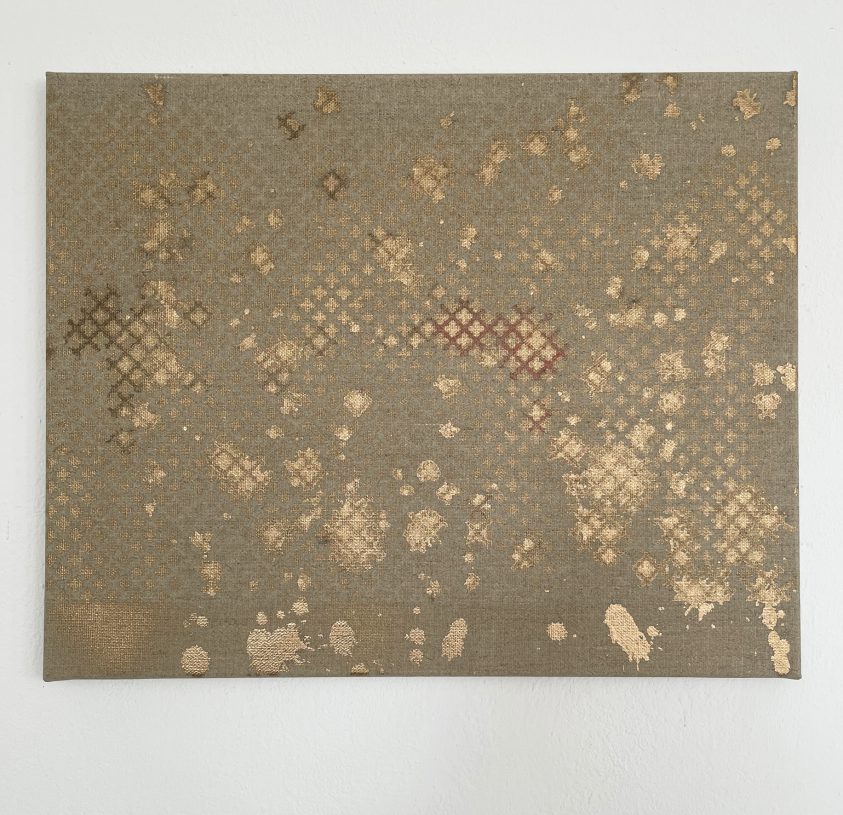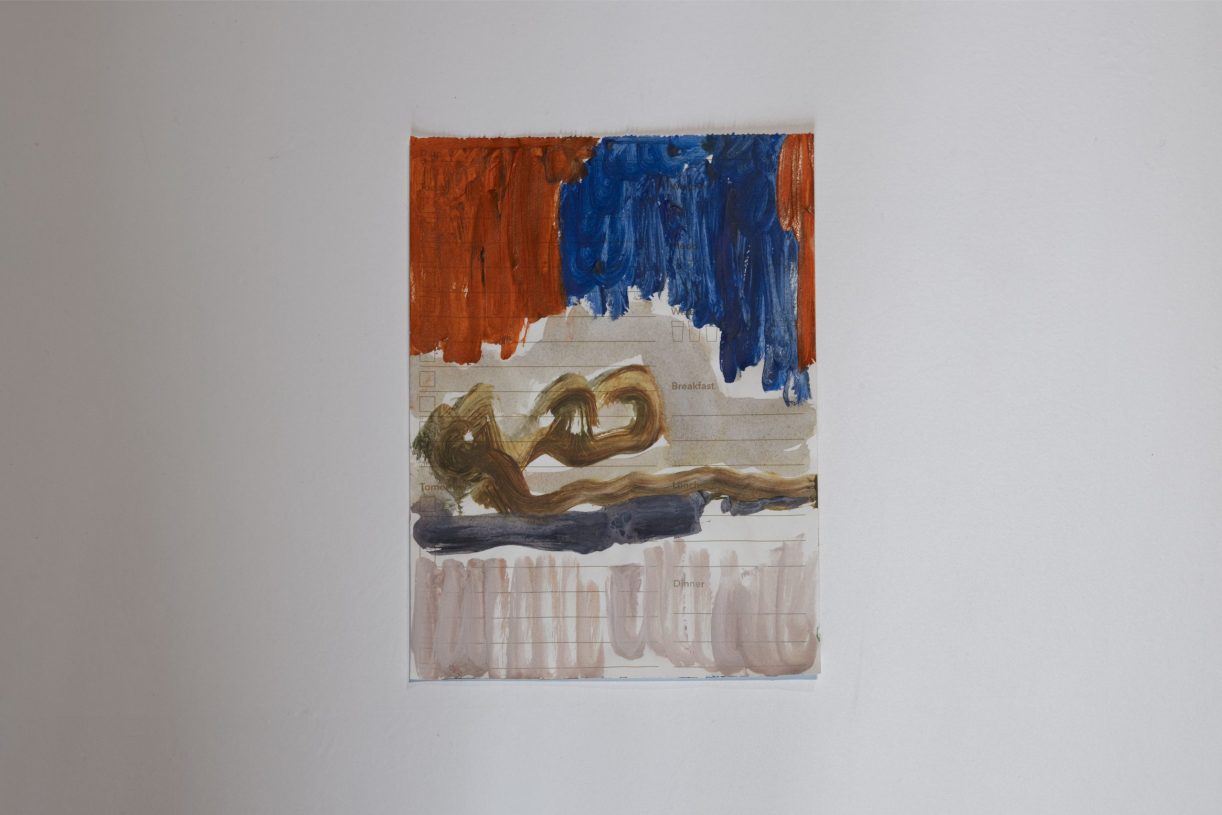David Batchelor, Shila Khatami, Daniel Sturgis, Hayley Tompkins
UNITS OF ATTENTION
press release

Units of Attention brings together the work of four artists who use the language of abstraction.
Each of these artists employs abstraction in a provocative and contemporary manner. Unlike much of modernist abstraction, their work seeks to directly engage with — rather than retreat from — the world around them. They subtly reposition the visual characteristics of past modernist abstraction — such as the primacy of color, gesture, and form — to reflect on contemporary life. In doing so, these paintings and sculptures challenge traditional hierarchies. This is not an abstraction rooted in purity, exclusion, or certainty; instead, these works subversively embrace doubt and casualness, interwoven with the bold colors and forms of contemporary design and the painterly traces drawn from today’s urban environment.
Raw saturated colour seems to impregnate the rough brittle concrete forms in David Batchelor’s (b.1955) Concreto-Concreto 2025 sculptures. Physically balanced, these imperfect blocks of concrete act as an armature to bring together resolutely contemporary colours. Batchelor’s concrete fragments have none of the certainty of modernist architectural forms, but they are not distressed or ruined. Rather like the monochrome sponge-reliefs made by Yves Klein in the 1950s seem to elevate the pure physical – life-affirming – experience of seeing saturated colour. Colours which are drawn from a contemporary palette of spray paint and physically and conceptually transform their concrete supports.
Shila Khatami (b.1979) sometimes uses commercial spray paints to make her paintings. In works such as East/West 2025 gold paint has been sprayed though a stencil and sits on a canvas substrate. There is a real delicacy in the way Khatami handles her materials, many of which she sources from decorating and hardware stores, such as the grilled stencil in East/West, or the hardboards, pegboards or paint rollers that she might use in other works. Through her handing of such materials, she imbues in her work a loose unstable fragility wonderfully at odds with the toughness one might assume her material choices embody.
Daniel Sturgis’s (b. 1966) hard-edged paintings fuse the intellectual rigour and material discipline of formalist traditions with the visual languages of contemporary popular culture and strategic informality. Paintings such as Daniel Sturgis, How To Be Together 4, 2025, reimagining the optimistic and utopian impulses of modernism through playful, often off-kilter geometric configurations. At once humorous, media-literate, and compositionally egalitarian, Sturgis’s paintings reposition the legacy of twentieth-century abstraction within a framework attuned to twenty-first-century cultural conditions and visual sensibilities. Meticulously constructed through the gradual application of multiple layers of thin paint, these works intentionally efface visible traces of the artist’s hand. The resulting surfaces are smooth, controlled, and refined—emphasising precision while subtly questioning traditional notions of authorship and expressive gesture in abstract painting.
Hayley Tompkins (b. 1971) frequently employs the leaves of notebooks, diaries, and day-planners as supports for her small, intimate acrylic paintings on paper. Within these works, an orchestrated vocabulary of painterly gestures overlays the faint ruled lines of the cream paper, establishing a dialogue between the formal language of painting and the material specificity of the everyday. This approach aligns with Tompkins’s broader practice, in which she applies paint to found objects such as sticks, white shirts, and paper grocery bags. Through these interventions, painting is invited to cohabit with the contingent material world that surrounds the artist. The gestures within each composition oscillate between decisiveness and provisionality, producing works that appear both spontaneous and deliberate—compositions that are at ease within, and responsive to, their contemporary condition.
Curated by Daniel Sturgis





